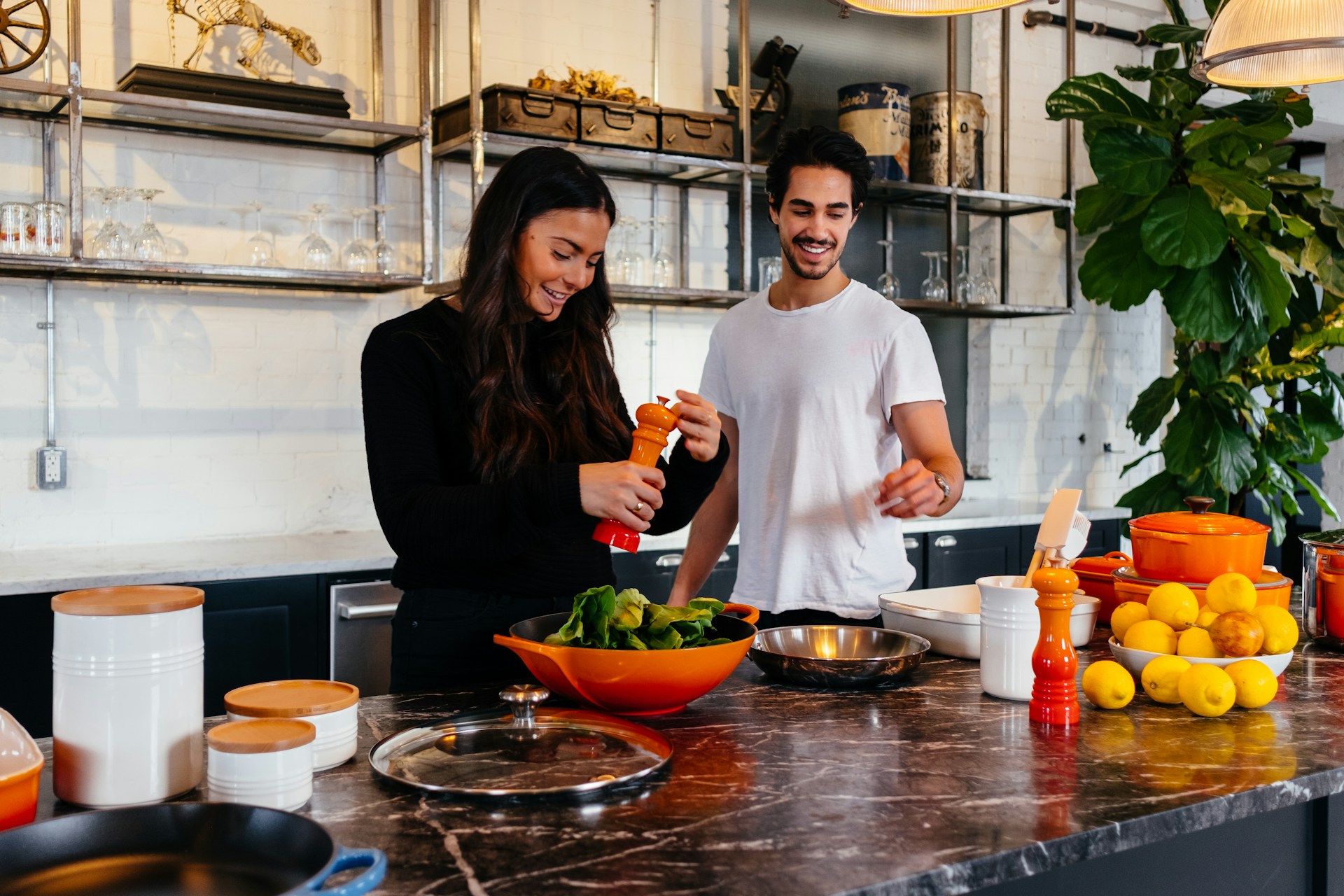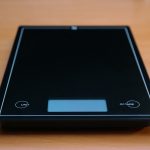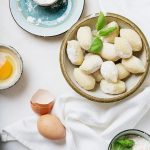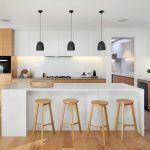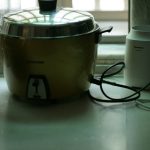Top Kitchen Rug Materials for Safety, Comfort, and Promoting Healthy Cooking Practices
When it comes to kitchen rugs, the right material can make a significant difference in safety, comfort, and the overall cooking experience. Here’s a comprehensive guide to help you choose the best kitchen rug materials for your home.
Understanding the Importance of Kitchen Rugs
Kitchen rugs are more than just decorative elements; they play a crucial role in enhancing safety and comfort in the kitchen. Here are a few reasons why you should consider investing in a high-quality kitchen rug:
Also to see : Top Digital Scales for Accurate Ingredient Measurement: Essential Tools for Your Weight Loss Journey
- Safety: Kitchen rugs with non-slip backing can prevent slips and falls, especially in high-traffic areas or around sinks and stoves where water and spills are common.
- Comfort: Anti-fatigue kitchen mats can significantly reduce the strain on your feet and back during long cooking sessions.
- Aesthetics: The right rug can complement your kitchen design, adding a touch of style and warmth to the room.
Best Materials for Kitchen Rugs
Polyurethane and Foam Mats
Polyurethane and foam mats are among the most popular choices for kitchen rugs due to their comfort, durability, and ease of maintenance.
- Abdulraheem Anti-Fatigue Mat: This mat, available on Wayfair, is a top pick for its extra cushioning, matte finish, and easy cleanup. Made from polyurethane and foam, it offers excellent joint support and traction. It comes in various colors and sizes, making it versatile for different kitchen layouts.
- Pros:
- Extra cushy due to the foam mid-layer
- Easy to clean with a dry paper towel or a wet rag
- Non-slip backside for additional grip
- Available in multiple colors and sizes
- Cons:
- May require occasional deep cleaning
Bamboo Mats
For those looking for a more sustainable and organic option, bamboo mats are an excellent choice.
Also read : Top Automated Herb Trimmers: Your Ultimate Guide for Nurturing an Indoor Kitchen Garden
- Anji Mountain Bamboo Mat: Made from 100% natural bamboo, this mat is known for its chic look and durability. The bamboo slats are coated to prevent moisture absorption, and the soft felt backing ensures the mat stays in place. It is easy to fold and store, and it repels water, protecting the kitchen floor.
- Pros:
- Sustainable and eco-friendly
- Easy to fold and store
- Non-slip felt backing
- Water-repellent
- Cons:
- Limited color and size options
- Dirt can accumulate between the slats
High-Density Foam Mats
High-density foam mats are renowned for their comfort and durability.
- Kangaroo Ergonomic Anti-Fatigue Kitchen Mat: This mat features high-density foam construction and a waterproof, stain-resistant finish. It is highly rated on Amazon for its comfort and durability. One reviewer praised it for its ability to alleviate foot and back pain during extended kitchen use.
- Pros:
- High-density foam for excellent cushioning
- Waterproof and stain-resistant
- Non-slip bottom
- Available in various sizes and colors
- Cons:
- May be more expensive than other options
Key Features to Consider
When selecting a kitchen rug, several features are crucial to ensure you get the best value for your money.
Non-Slip Backing
A non-slip backing is essential to prevent the rug from sliding around, especially on smooth kitchen floors.
- Gorilla Grip Anti-Fatigue Mat: This mat features a high-density foam and a pebbled rubber surface that is easy to clean. The non-slip bottom ensures the mat stays in place, even with heavy foot traffic.
Ease of Cleaning
Kitchen rugs can get messy quickly, so ease of cleaning is a vital factor.
- Sky Solutions Sky Mat Comfort Anti-Fatigue Mat: This mat has a smooth surface made from PU leather that is easy to wipe clean. However, the grooves on the surface can make it slightly harder to clean than some other mats.
Thickness and Cushioning
The thickness and cushioning of the mat can significantly impact comfort during standing.
- Featol Anti-Fatigue Kitchen Mat: With nearly an inch of high-density memory foam, this mat provides a luxurious experience, making it feel like you’re walking on a cloud. The leather-like top layer adds to its comfort and aesthetic appeal.
Comparison Table: Top Kitchen Rug Materials
| Material | Product | Thickness | Non-Slip | Ease of Cleaning | Price Range |
|---|---|---|---|---|---|
| Polyurethane and Foam | Abdulraheem Anti-Fatigue Mat | Varies | Yes | Easy with dry paper towel or wet rag | $30-$50 |
| Bamboo | Anji Mountain Bamboo Mat | N/A | Yes | Easy, but dirt can accumulate between slats | $40-$60 |
| High-Density Foam | Kangaroo Ergonomic Anti-Fatigue Kitchen Mat | 0.5 inches | Yes | Waterproof and stain-resistant | $30-$40 |
| High-Density Foam | Featol Anti-Fatigue Kitchen Mat | 0.9 inches | Yes | Leather-like top layer, easy to clean | $50-$70 |
| Memory Foam | Sky Solutions Sky Mat Comfort Anti-Fatigue Mat | 0.9 inches | Yes | Smooth surface, but grooves can be tricky to clean | $30-$50 |
Practical Insights and Actionable Advice
Choosing the Right Size
- Ensure the mat fits comfortably in the area where you will be standing most, such as in front of the sink or stove.
- Consider a two-piece set for larger kitchens to cover more ground.
Maintenance Tips
- Regular Cleaning: Use a dry paper towel or a damp cloth to clean spills immediately. For deeper cleaning, use mild soap and water.
- Drying: Allow the mat to air dry or use a clean towel to dry it. Avoid using a dryer or direct sunlight, which can damage the material.
Aesthetic Considerations
- Color and Pattern: Choose a color and pattern that complements your kitchen decor. For example, the Langley Street Caulkins Anti-Fatigue Kitchen Mat features a Persian-style design that adds a beautiful touch to the kitchen.
- Material Aesthetic: Consider the look and feel of the material. Bamboo mats offer a natural, organic look, while polyurethane and foam mats can have a sleek, leather-like finish.
Real User Experiences
Here are some quotes from real users that highlight the benefits and drawbacks of different kitchen rug materials:
- Kangaroo Ergonomic Anti-Fatigue Kitchen Mat: “This is my second rug for my kitchen. I wore the first one out. It feels really comfortable on your feet. I spend a lot of time in the kitchen, and it has helped my feet and back.”
- Anji Mountain Bamboo Mat: “I love that the slats make it possible to fold the mat in half for storage. The underside is also slip-resistant thanks to a layer of soft felt and little bumps of a rubbery, nonslip material.”
- Featol Anti-Fatigue Kitchen Mat: “My only complaint is that when I step off of it onto my hardwood floors they feel extra hard now because my feet have adapted to the absolutely luxurious experience that these provide.”
Choosing the right kitchen rug material is a decision that should be based on several factors, including safety, comfort, ease of cleaning, and aesthetic appeal. Whether you opt for polyurethane and foam, bamboo, or high-density foam, ensuring that your kitchen rug meets your specific needs can make a significant difference in your cooking experience.
By considering the key features such as non-slip backing, ease of cleaning, and thickness, you can select a rug that not only enhances the safety and comfort of your kitchen but also complements its design. Remember, the right kitchen rug is an investment in your health and the overall enjoyment of your cooking time.

